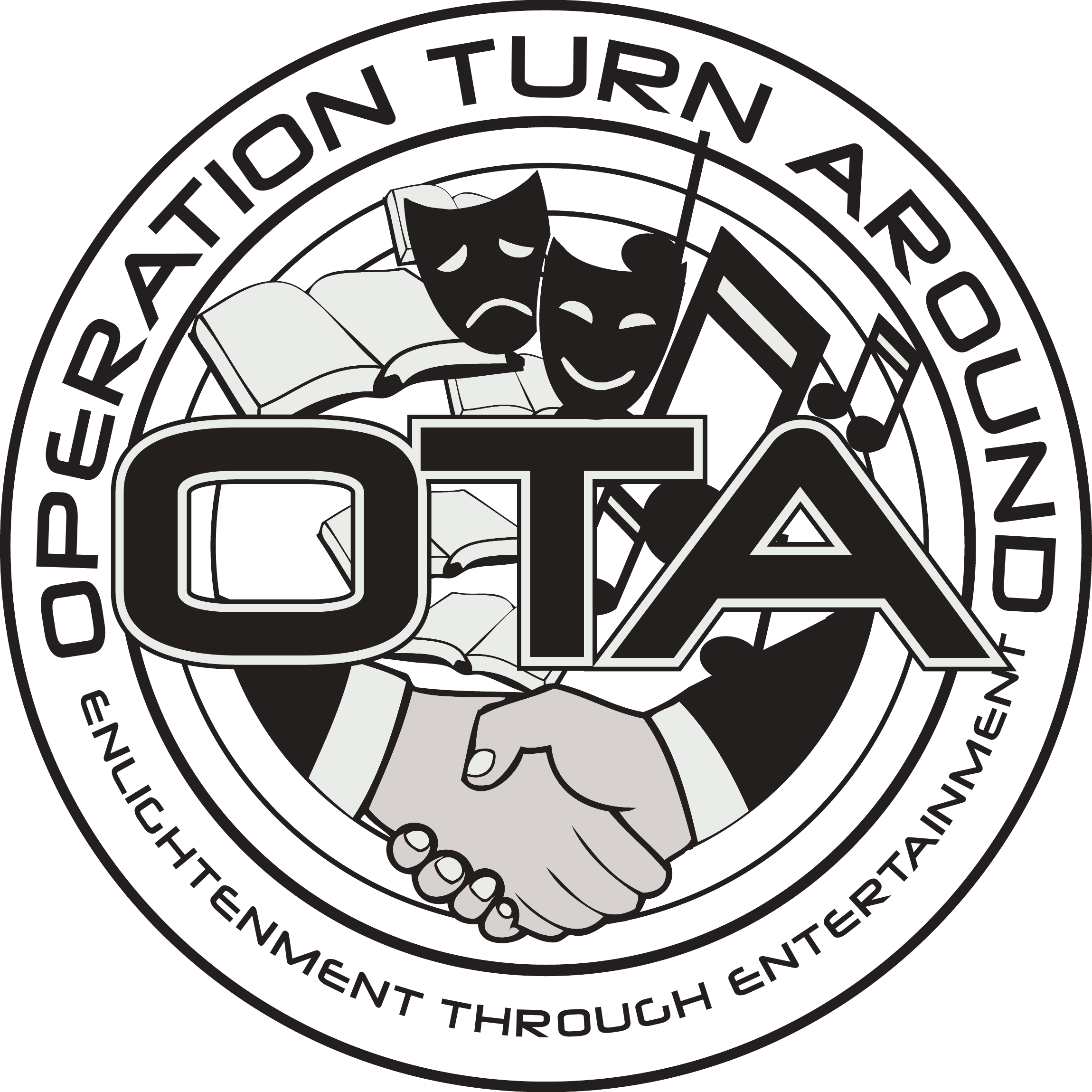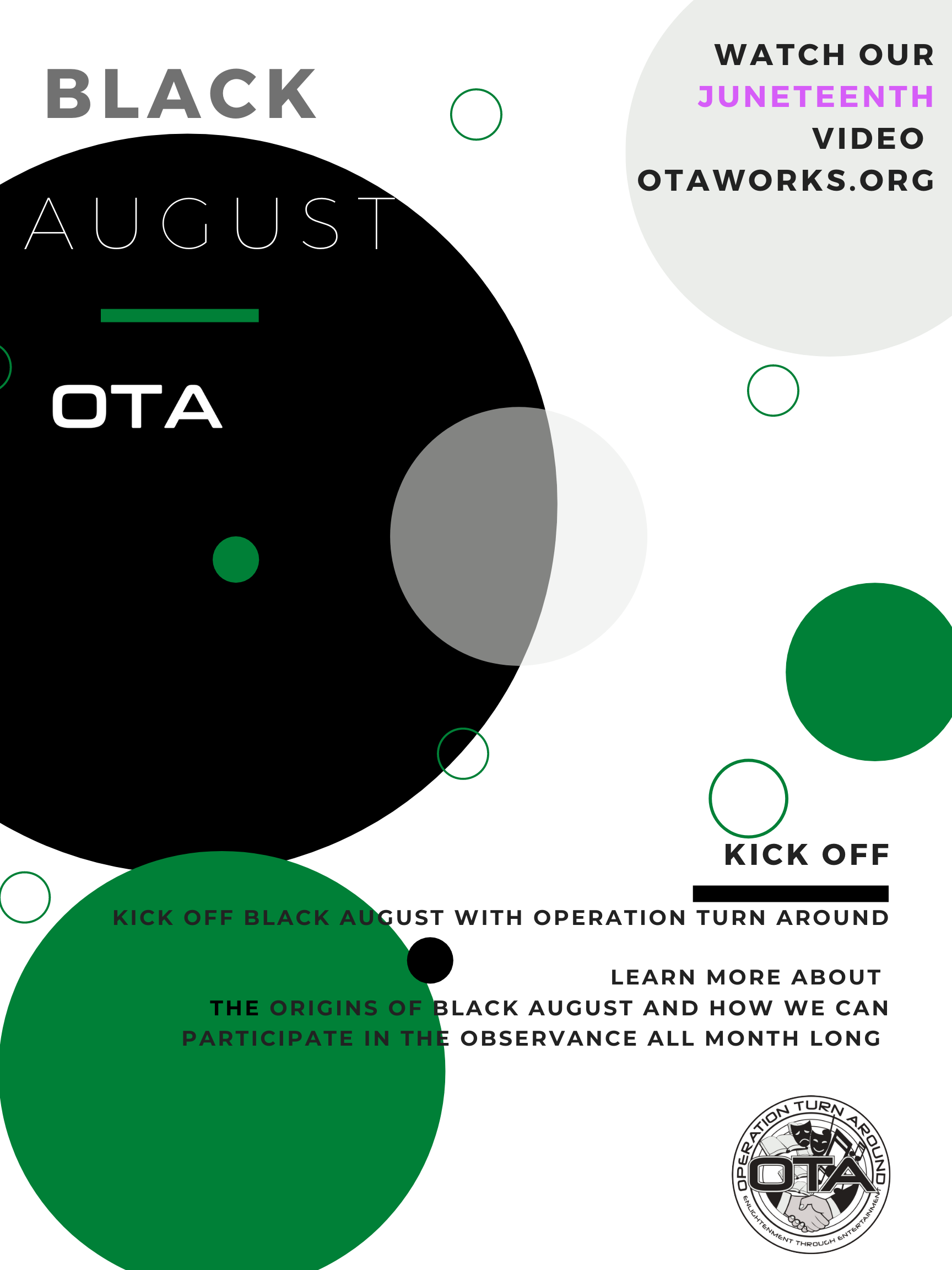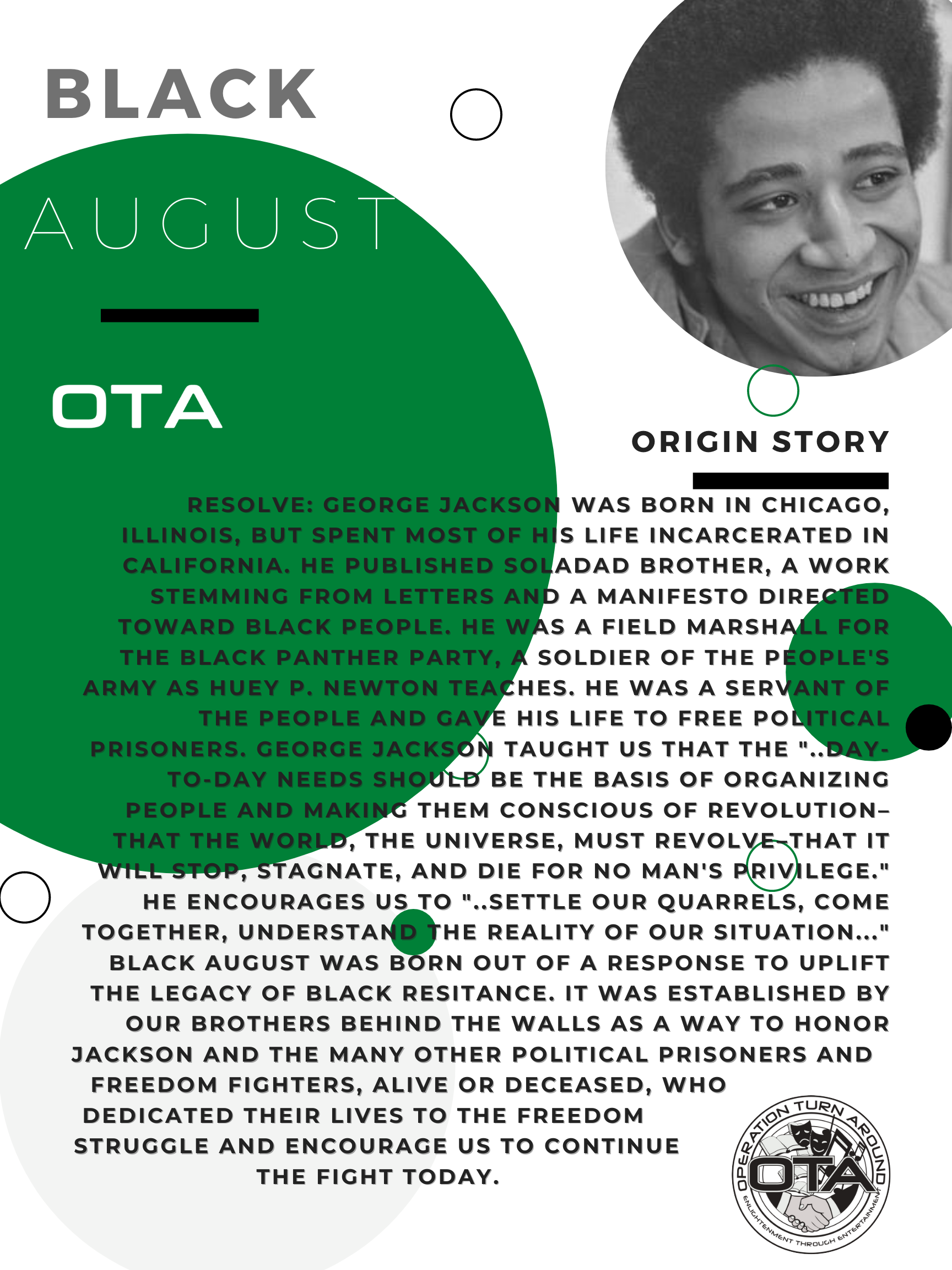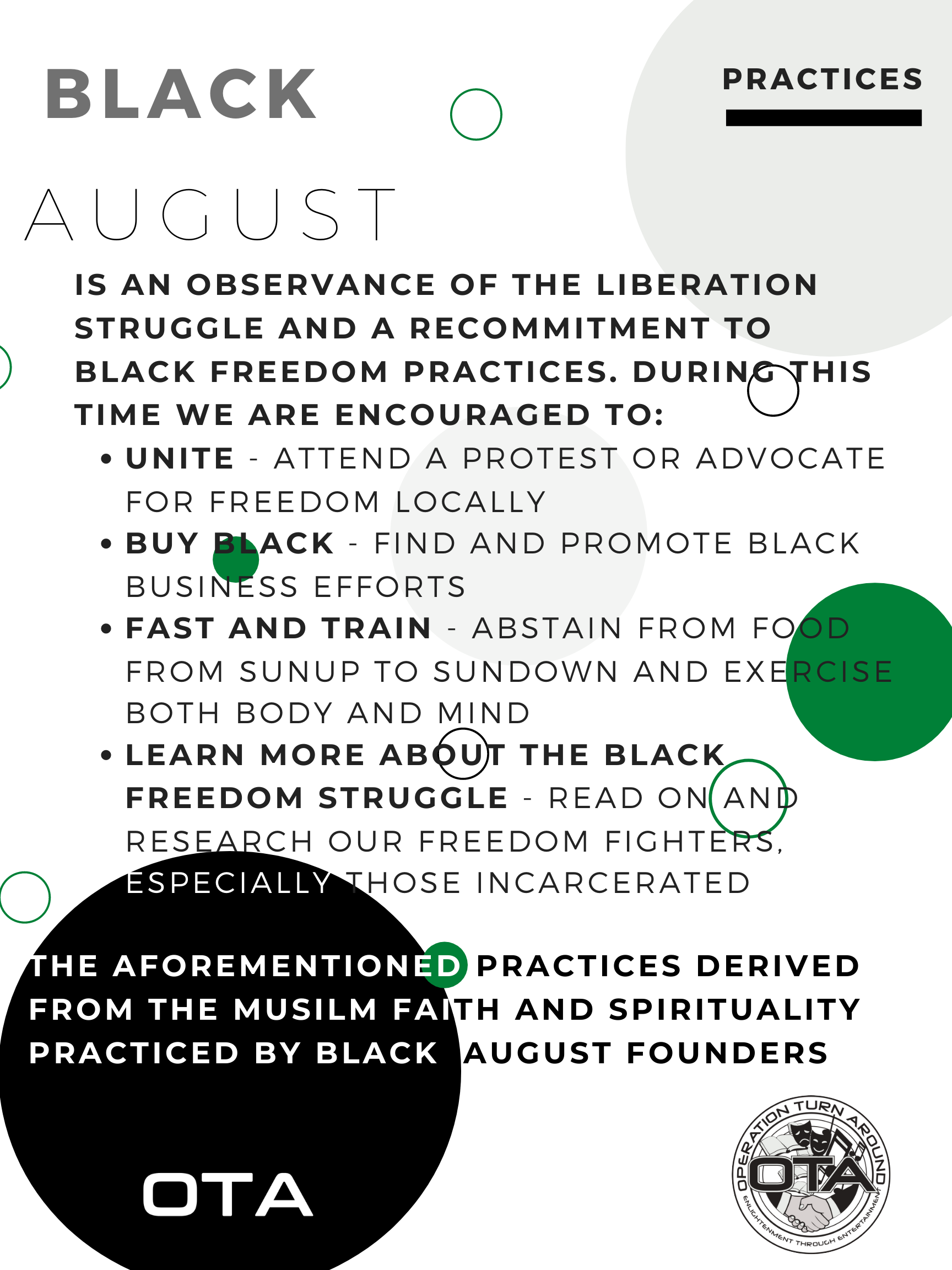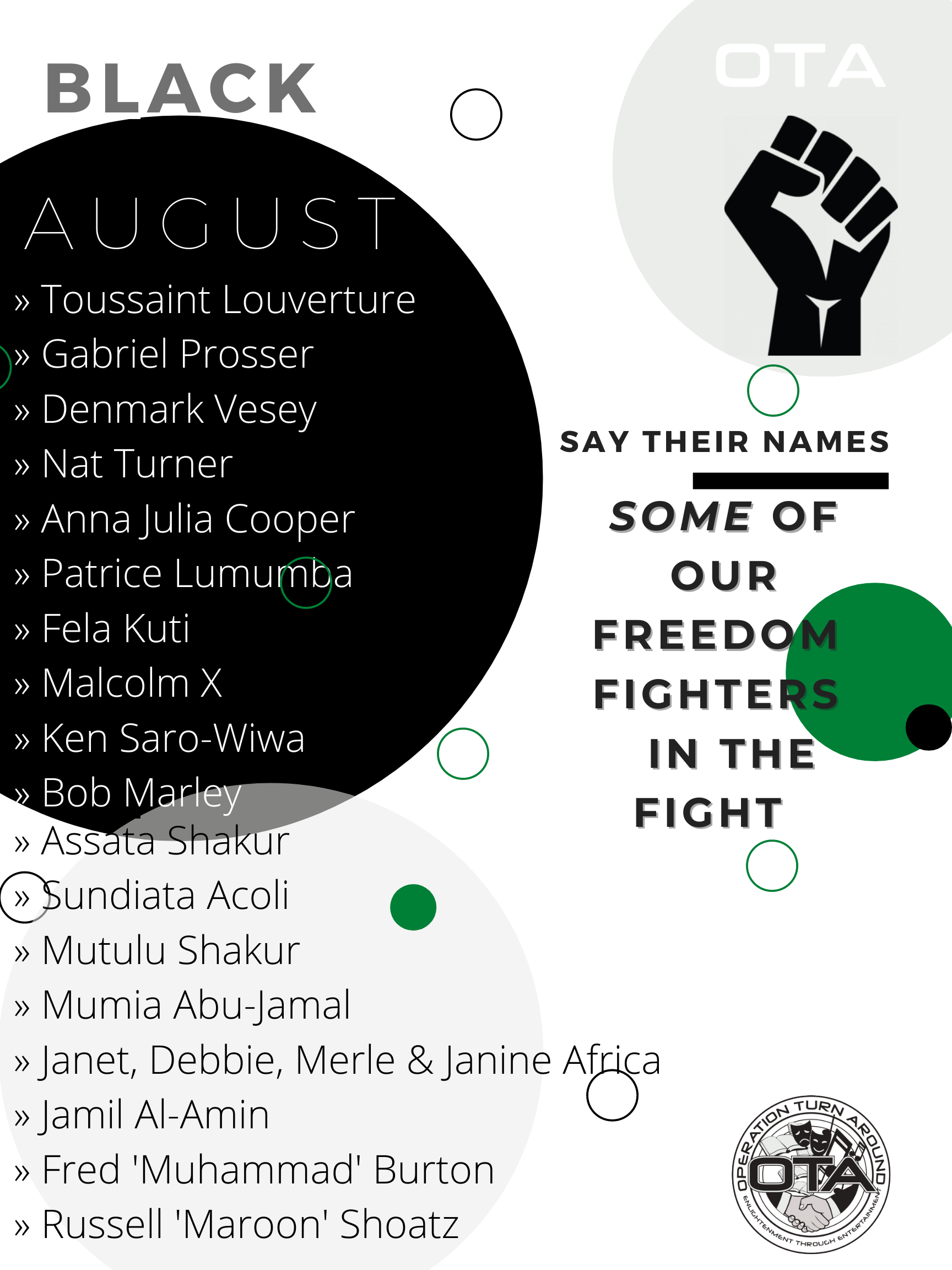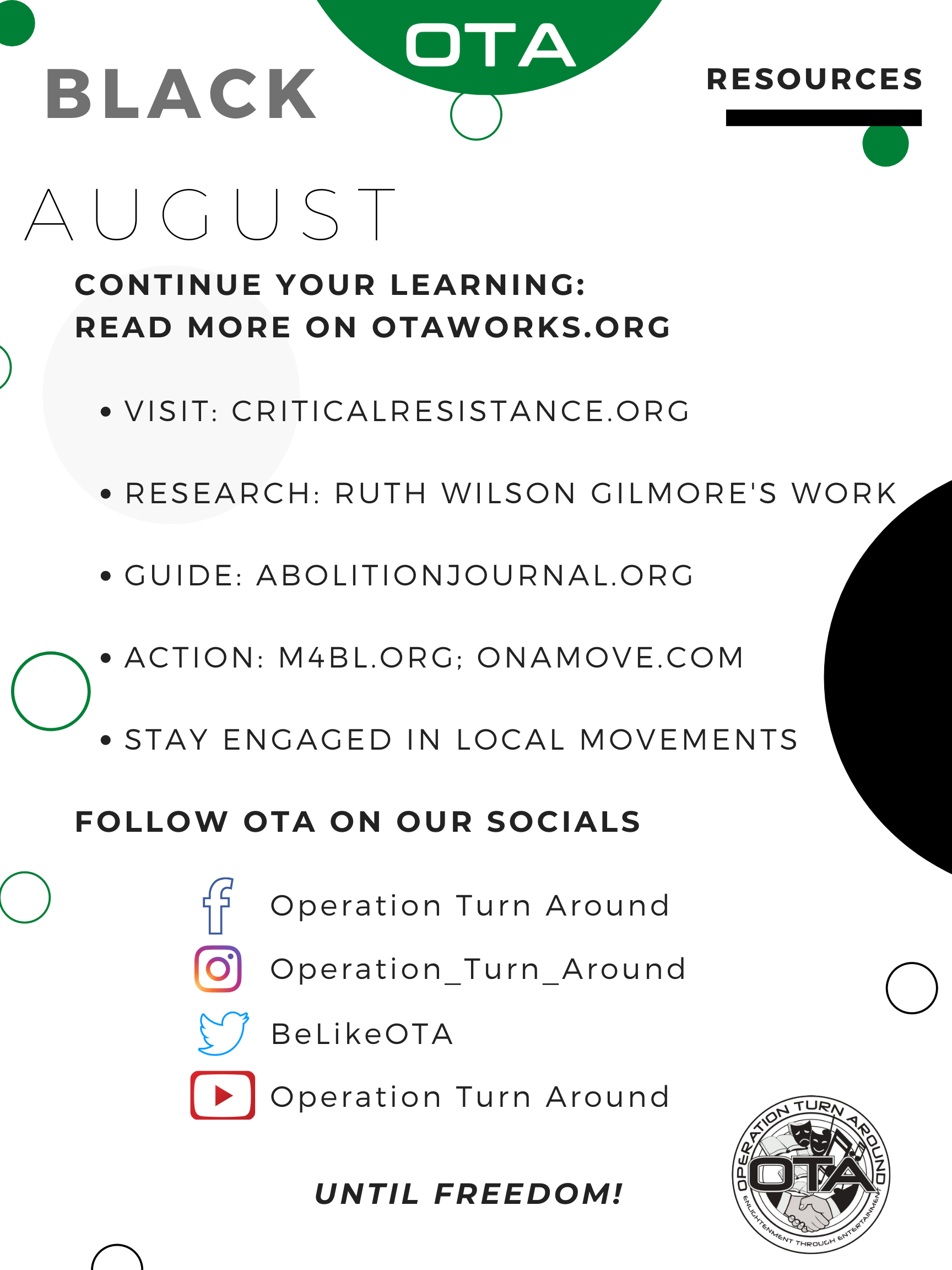Community Works
As a grassroots organization we are “boots on the ground”. This means we are actively working in, for and by our communities. The work is movement building, and we are enhanced by an “all hands on deck” philosophy. When people come to the table willing to do the work, our lives are enriched and we get more done. OTA believes everyone has a duty and a role to play in the movement. Whether as a leader, an accomplice, or a financial supporter, we are all servants on a mission, and this is how we get things done.
Important Terms:
- Brave Space
- Safe Space
- Emotional Labor
- Privilege
- Harm
- Marginalized Groups
- Police State
- State Sanctioned Violence
- Solutionizing
What is the “Movement”?
Though this has been defined by multiple sources, the movement is “Freedom” for all people. The word informs us to work for the least of us. It is on this ideology that we are focused. Malcolm X teaches the notion that we do not need new laws; the ones we have should apply to all people equally. Justice work is steeped in accountability. MLK popularized the expression, none of us are free unless all of us are free. We are at a time where most people are recognizing that many of our brothers and sisters lack “true” freedom. Either one is free or they are not. We often speak of freedom on paper (the Constitution), yet our actions do not reflect this freedom in reality. This is a global awakening. It should both embarrass and invigorate us to take action—not just rhetorical and private votes of support, but tangible, physical, visceral action. The chairman Fred Hampton implores that education must be at the forefront of all movements, otherwise we will create new imperialists and neo-colonialists. The goal is not to become the oppressor, nor is it to create new oppressed groups. We take his lessons to mean, without infusing education, we are bound to repeat the perils of the past in a modern cloak. Movements are intelligent, purposeful and healing.
Restorative Justice is Work:
Restorative justice is transformative; it repairs the harm caused by wrongdoing. This is a purposeful space where victims, offenders and community members meet to decide how to do just that. It is the path towards healing and reconciliation. There is a critical path that leads and follows restorative justice. We must understand roles and terms (see below). Harm can be both tangible (e.g. police abuse, underfunded schools, racial profiling, or detrimental outcomes) and intangible (e.g. distrust, dehumanization, bias, prejuducies, or mental and emotional distress). It can also be intergenerational, institutional and systemic. Harm may exist whether we accept it or not. It doesn’t have to come directly from us or to us, and it may silently create privileges and disadvantages among groups so that everyone is affected. An example of this is Racial Injustice. Racial Injustice has caused harm stemming from about the 16th century. Even though no one alive today has participated in this particular harm, it has established a status quo that privileges groups at the expense of disadvantaging others that are very much alive and well today. Without acknowledgement, intentionality and understanding there can be no proper reconciliation. One cannot make assumptions, nor can one improperly push solutions because one feels they are appropriate. When someone is part of, or associated with, the group causing harm or not part of, or associated with, the group being harmed, they are experiencing “privilege”. And whether they realize it or not, this privilege often determines how they are treated, what they are allowed to do, and the percentage of time they get to experience peace of mind. All of which, combined with myriad other conditional variances, add up to big differences in actual or perceived difficulties which can dramatically affect one’s ability to enjoy life, liberty and the pursuit of happiness.
Further, we cannot expect the people on whom harm has been perpetrated to carry the burden, or emotional labor, so that even well intentioned groups may feel comfortable. Though some may choose to do so, it is not their duty to convince, educate, comfort or even include others in their healing, discussion or safe spaces. If you are interested in restorative justice, there are a number of resources by informed people doing this work that you can tap into to become better acquainted. You are not entitled to enter others’ safe spaces even when you mean well. Often oppressed groups do not have the luxury of safe spaces, even when the notion should afford them one. Examples of this include engagement with the police, reporting acts of racism to HR, and existing while Black. Some groups live in a constant police state, under suspicion and in isolation or fear therein. Society has normalized diversity and inclusion as tokenism, which leads to mistreating marginalized groups as a monolith. A “brave space” is a platform for harmed groups to engage privileged groups; it is a platform for reconciliation. When done right, it allows equity and latitude for the formation of reconciliation.
This is the beginning of the work, not the end of it. Because society has been, and continues to be so perverse to marginalized groups, those interested in working in movements in any capacity have to engage in restorative justice (as defined above). They must actively work to unlearn the toxic, oppressive and discriminatory practices we’ve been taught. This looks like shedding privilege, because a lot of these practices are considered tradition and have been uniquely tied to memories of nostalgia. It may also be uncomfortable, because for many, their status quo is all they know. However, it is not just prudent and necessary, but cathartic. It allows us to move towards truth and become deeper in our own personal spirituality. We may then become change agents and begin to improve our society and allow ourselves and our brethren to properly heal.
Getting Started:
Read (see below); be in community with folks; participate in movements (join a campaign); learn about such movements happening in and out of your communities; get an accountability partner; journal; allow yourself to be honest; embrace feedback; show up for oppressed groups; ask them what they need; don’t pretend to have all the answers; LISTEN for understanding; HEAR from the oppressed point of view; put yourself in their shoes; LEARN; be present; be vulnerable; be open; check your privilege; don’t be defensive; don't treat this as a purely academic or charitable exercise; remember the golden rule; heal yourself.
Campaigns:
- “Education as a Pathway to Freedom”
- “BAIL OUT”
- “S.T.E.A.M.”
- “I am a Child of the One United African Diaspora”
- “Building the Block”
OTA defines campaigns as a series of operations with related initiatives intended to achieve a particular objective. A specific campaign might employ a unique method or approach. OTA uses campaigns to draw attention to specific issues or goals, to educate and inform, and to encourage people to take ownership through determined actions designed to effect responsible change.
Reading List (for starters):
- The New Jim Crow by Michelle Alexander
- From #BlackLivesMatter to Black Liberation by Keeanga–Yamahtta Taylor
- The Autobiography of Malcolm X by Malcolm X and Alex Haley
- Stamped from the Beginning: The Definitive History of Racist Ideas in America by Ibram X Kendi
- STAMPED: Racism, Antiracism and You by Ibram X Kendi
- How to Be an Antiracist by Ibram X Kendi
- Antiracist Baby by Ibram X Kendi
- Between the World of Me by Ta-Nehisi Coates
- Race–ing, Justice and Engendering Power by Toni Morrison
- On the Importance of Education Prior to Action by Fred Hampton
- How Not to Get Shot: And Other Advice From White People by D.L. Hughley
- The Color of Wealth in Boston by the Federal Reserve Bank of Boston
- The Power of Educational Justice Movements
- From Jobs to Homeownership, Protests Put Spotlight on Racial Economic Divide
- Boston Globe Spotlight Series: Boston.Racisim.Image.Reality
- Maintaining Professionalism in the Age of Black Death is....A Lot
- Black Political Mobilization
- How to Support Black Owned Businesses
- How Americans are Supporting Black Owned Businesses
